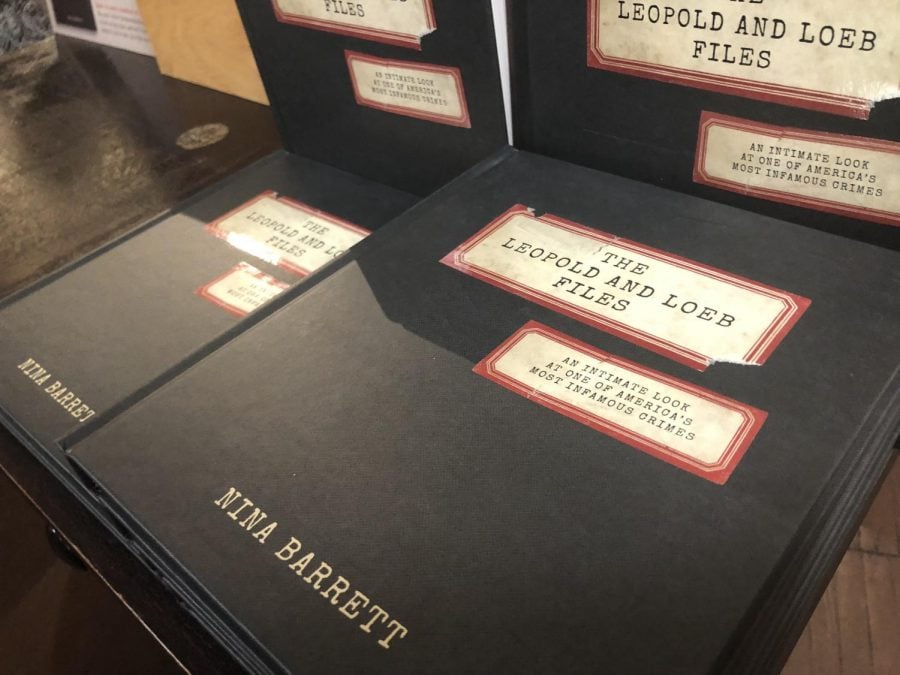Nina Barrett tackles famous Chicago murder story in new book
(Ally Mauch/Daily Senior Staffer)
“The Leopold and Loeb Files,” by NU alumna and Evanston business owner Nina Barrett. Barrett released the book Tuesday at a book launch at Bookends & Beginnings.
July 17, 2018
The story of Nathan Leopold and Richard Loeb — two Chicago teenagers who became famous for the 1924 murder of 14-year-old Bobby Franks — has been told again and again in books, movies, musicals, plays and TV shows. Nina Barrett (Medill ’87) is doing it differently.
“What I’m trying to do is almost like an archaeological excavation of what really happened here,” Barrett said. “It’s a story that’s been romanticized and mythologized … I feel like there are a lot of essentially fictionalized versions of the story out there.”
Barrett, owner of the local Evanston bookstore Bookends & Beginnings, released her book, “The Leopold and Loeb Files,” Tuesday. She first became interested in the story while she was working in public relations for the Northwestern Library and discovered that NU Archives has a collection of materials from the original murder case, she said.
Though she is “not a true crime kind of person,” Barrett said she immediately thought the materials would be of interest to the community. In 2009, She put together an NU Library exhibit titled “The Murder That Wouldn’t Die” to showcase the collection and, later, she began working on the book.
University archivist Kevin Leonard said NU has the “premier collection in the world” relating to the Leopold and Loeb murder, adding that many of the materials cannot be found elsewhere.
He said he found many of the documents several years ago while emptying out some administrative records. Leonard first discovered the ransom note Leopold and Loeb wrote, and immediately knew he had come upon something important.
In addition to the ransom note, the collection includes transcripts of psychiatric evaluations and the confessions of the murderers — material so “startling” Leonard said he has yet to finish reading it.
“I have never been able to read through the whole thing because it is so chilling,” Leonard said. “It is such a grim and sad and horrible story.”
Barrett’s publisher and president of Agate Publishing, Doug Seibold, said the access to those materials is what sets Barrett’s book apart from the rest and provides readers with a deeper understanding of “the mysteries of this case.”
Further, the materials in the NU collection allowed Barrett to create a more visual story, with many of the photographs, newspaper clippings and other documents printed in the actual book.
“We knew we had something special on our hands in terms of the access to these materials,” Seibold said. “So right from the beginning it was an instrumental part of our conceiving of the book.”
Barrett said the visual aspect of the book is important to her, especially because many other books telling the same story do not use photographs and primary materials in the same way.
She said she also wanted to work against the notion of Leopold and Loeb as the “stars” of the case, noting that they have been romanticized and glamorized over time. Barrett added that her goal was to answer the questions that remain about the case, without contributing to the glamorization of the murderers.
“What I wanted to try to do with the book is take people inside and address what I think are the most important, enduring, haunting, unanswered questions about the case,” Barrett said.
Email: [email protected]
Twitter: @allymauch


